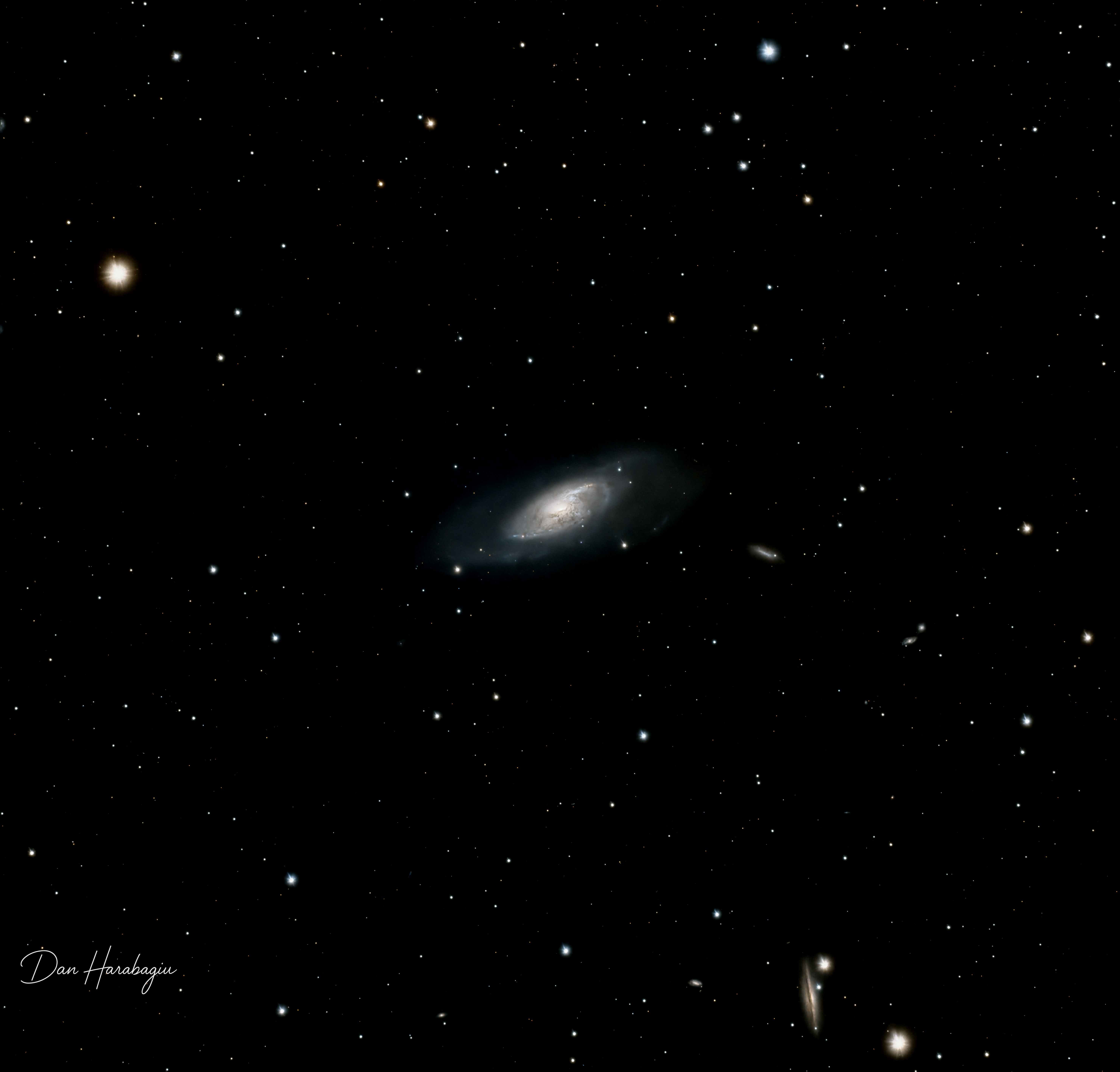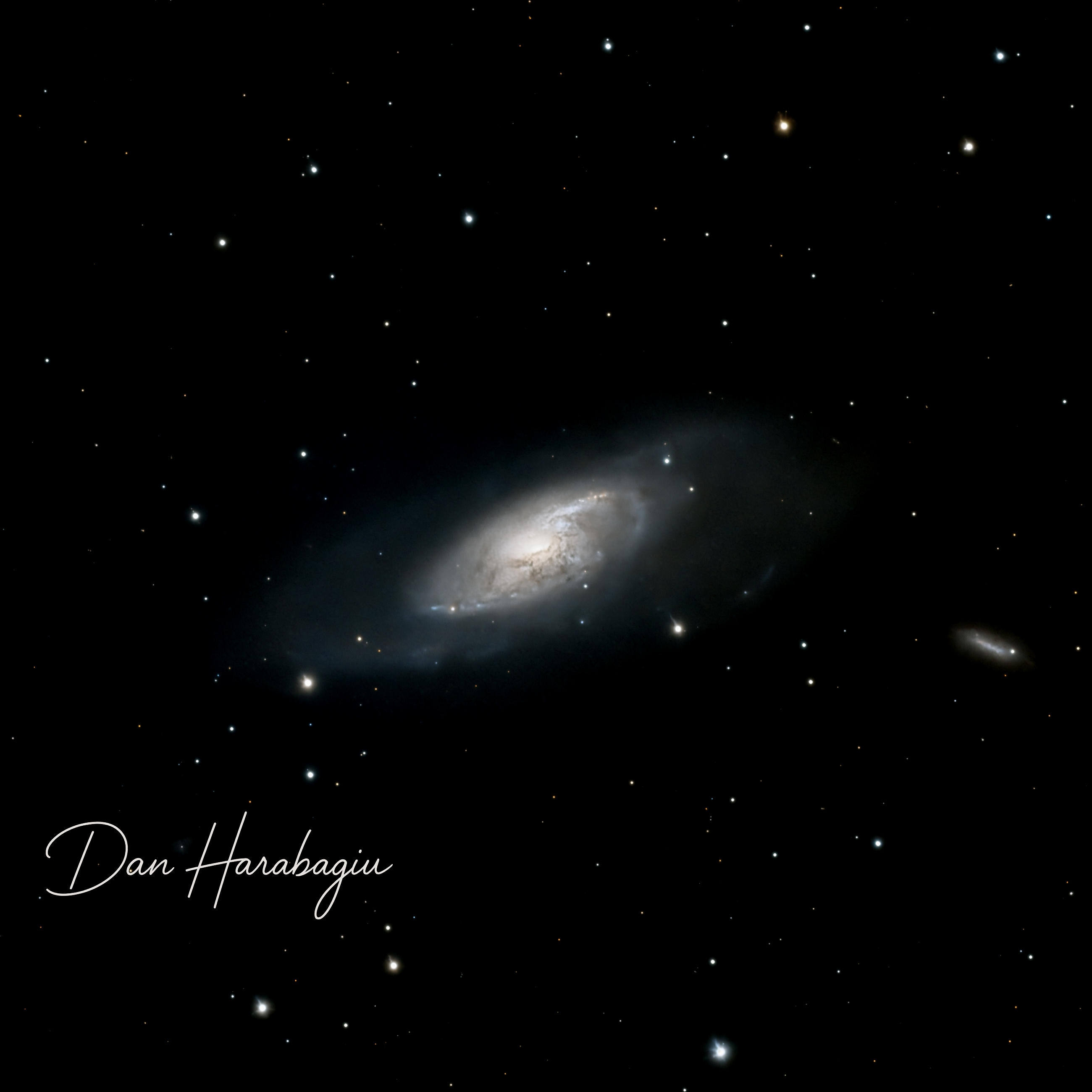 Messier 106 (M106) and neighboring galaxies, including NGC 4217.
Messier 106 (M106) and neighboring galaxies, including NGC 4217.
 Messier 106 (M106) Zoom In.
Messier 106 (M106) Zoom In.
🌌 Messier 106 (M106)
- Catalog: Messier 106, NGC 4258
- Type: Intermediate spiral galaxy (Sbp)
- Constellation: Canes Venatici (Hunting Dogs)
- Distance: ~22–25 million light-years
- Apparent Magnitude: ~8.4 (visible with small telescopes)
- Angular Size: ~19 × 8 arcminutes
- Actual Diameter: ~135,000 light-years
🔬 Scientific Importance
M106 is classified as a Seyfert II galaxy, known for:
- A supermassive black hole at its core
- Anomalous spiral arms visible in radio and X-ray — likely jets of energetic gas
- Hosting a water maser, used for highly precise cosmological distance measurements
🌠 NGC 4217 — The Edge-On Companion
- Type: Edge-on spiral galaxy
- Distance: ~60 million light-years
- Apparent Magnitude: ~11.7
- Angular Size: ~5 × 1 arcminutes
- Orientation: Seen from the side, offering a textbook profile of a spiral galaxy’s disk
❗ Note: NGC 4217 is not physically associated with M106 — it lies in the background and only appears nearby due to line-of-sight coincidence.
✨ What Else is Visible?
This image contains:
- Multiple background galaxies scattered across the field — some are faint smudges or spiral forms
- Foreground stars from our Milky Way galaxy, appearing as bright, crisp points
📷 Equipment Used
- Telescope: TS-Optics 80PHQ (544mm f/6.8 Quintuplet APO)
- Camera: SVBONY SV605MC (IMX533 Mono)
- Mount: Sky-Watcher EQ5 Pro
- Guiding: Off-Axis Guider with veLOX 178 C
- Filters: LRGB
- Software: NINA, PHD2, PixInsight, Photoshop
📝 Final Thoughts
M106 is one of the most fascinating spiral galaxies observable from Earth, offering both visual beauty and rich scientific intrigue. When framed with NGC 4217 and a backdrop of countless distant galaxies, it becomes a perfect target for both astrophotographers and astronomy enthusiasts.
Clear skies!